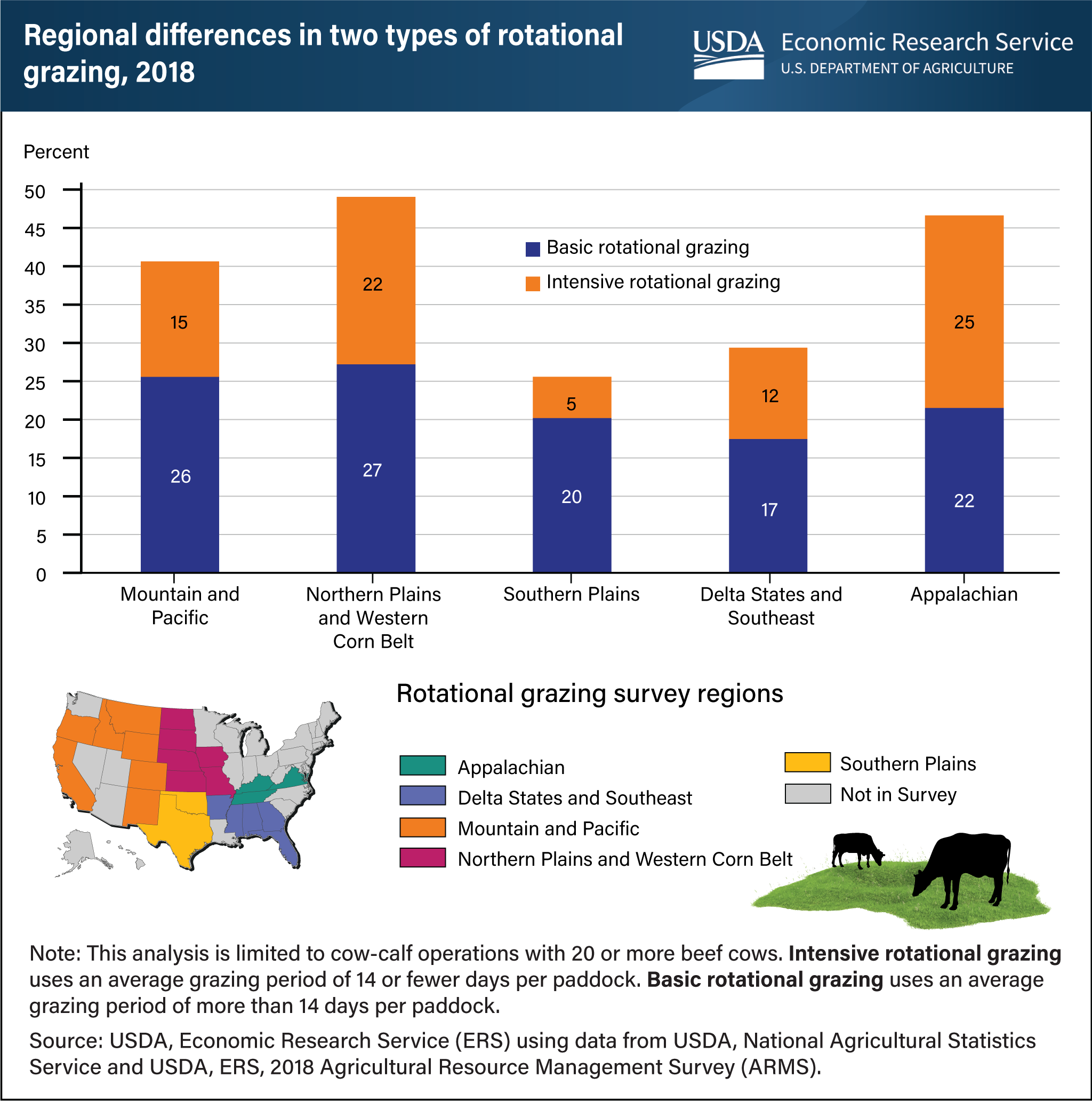Rotational grazing adoption varies by region
- by Christine Whitt and Steven Wallander
- 1/30/2023

Rotational grazing is a management practice in which livestock are cycled through multiple fenced grazing areas (paddocks) to manage forage production, forage quality, animal health, and environmental quality. In a recent study, USDA, Economic Research Service (ERS) researchers found the highest rate of total rotational grazing adoption (49 percent of operations) in the Northern Plains and Western Corn Belt region, and the lowest level (25 percent of operations) in the Southern Plains region. The researchers classified two systems of rotational grazing: basic, in which average grazing periods are longer than 14 days per paddock; and intensive, in which grazing periods are 14 days or fewer per paddock. Researchers used detailed cow-calf operation data on grazing system management decisions to compare the adoption rates of basic rotational grazing systems with intensive systems. For four of the five regions analyzed in this research, basic rotational grazing was more common than intensive rotational grazing. The exception was the Appalachian region, where 25 percent of cow-calf operations used intensive rotational grazing and 22 percent used basic rotational grazing. Major drivers for regional differences in adoption could include varying forage types, which may respond better to rotational grazing than others, and differing climates. This chart draws on information in the ERS report Rotational Grazing Adoption by Cow-Calf Operations, published November 2022, and in the ERS Amber Waves article Study Examines How and Where U.S. Cow-Calf Operations Use Rotational Grazing, published in November 2022.


